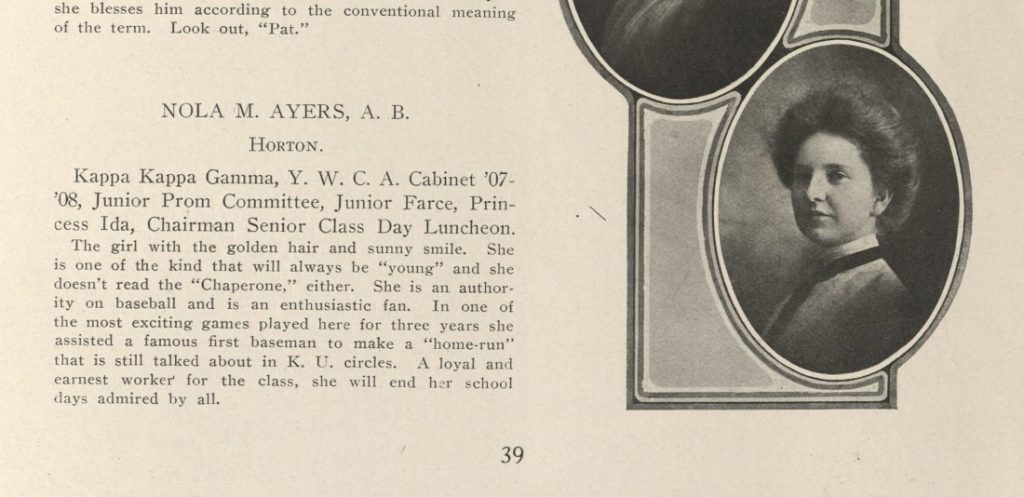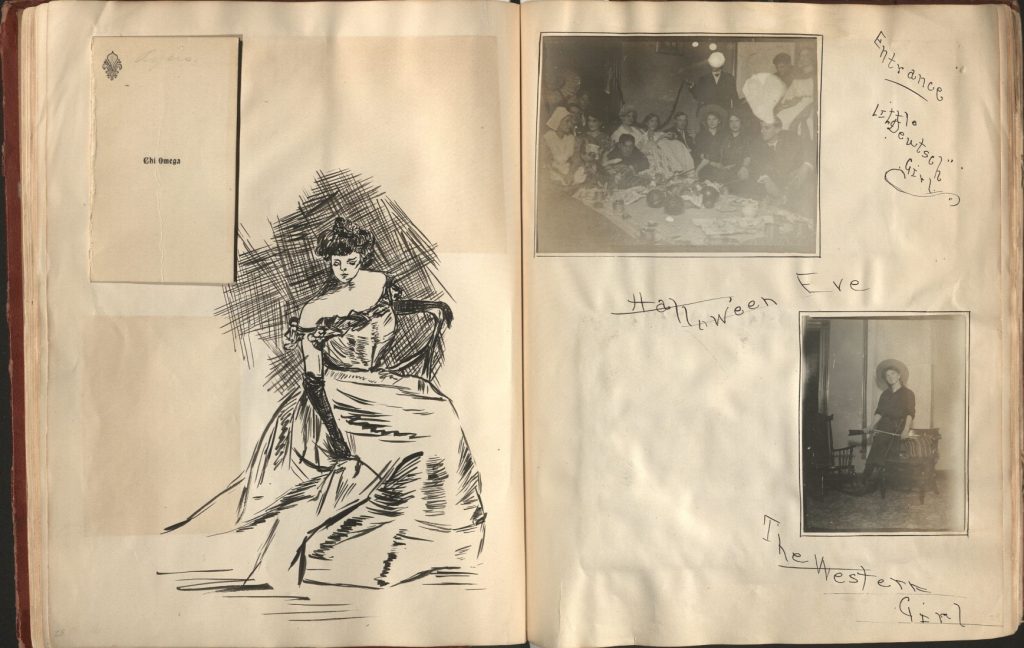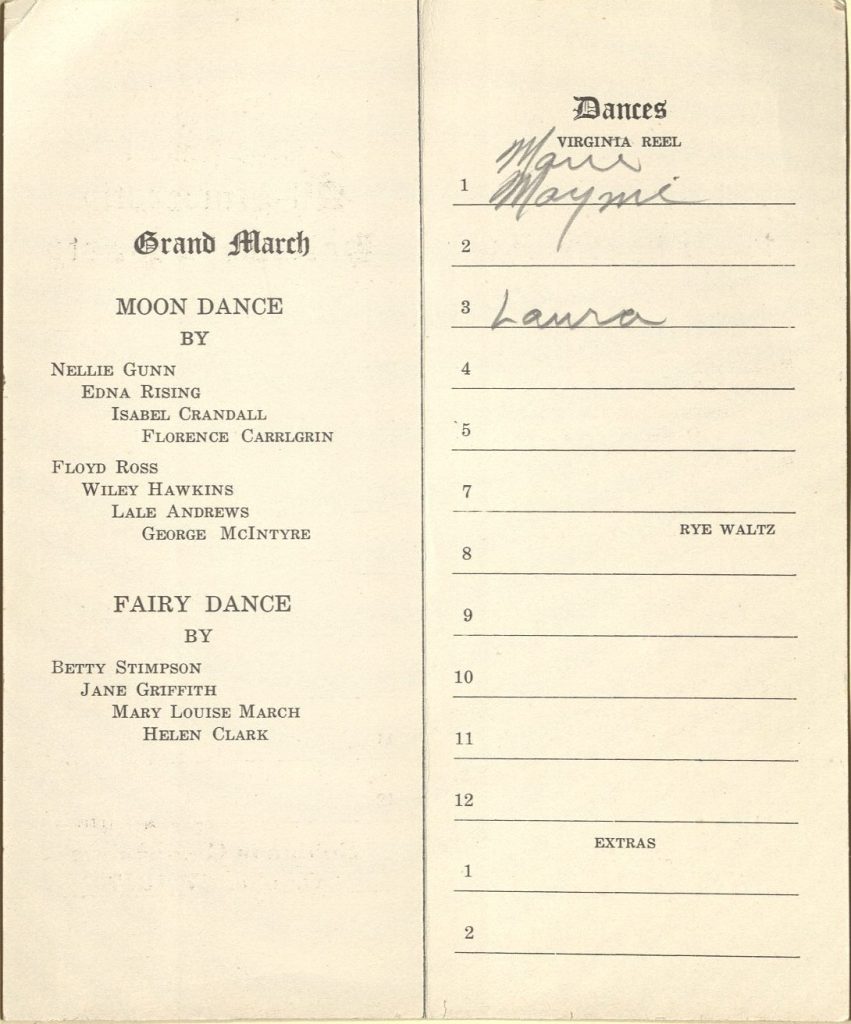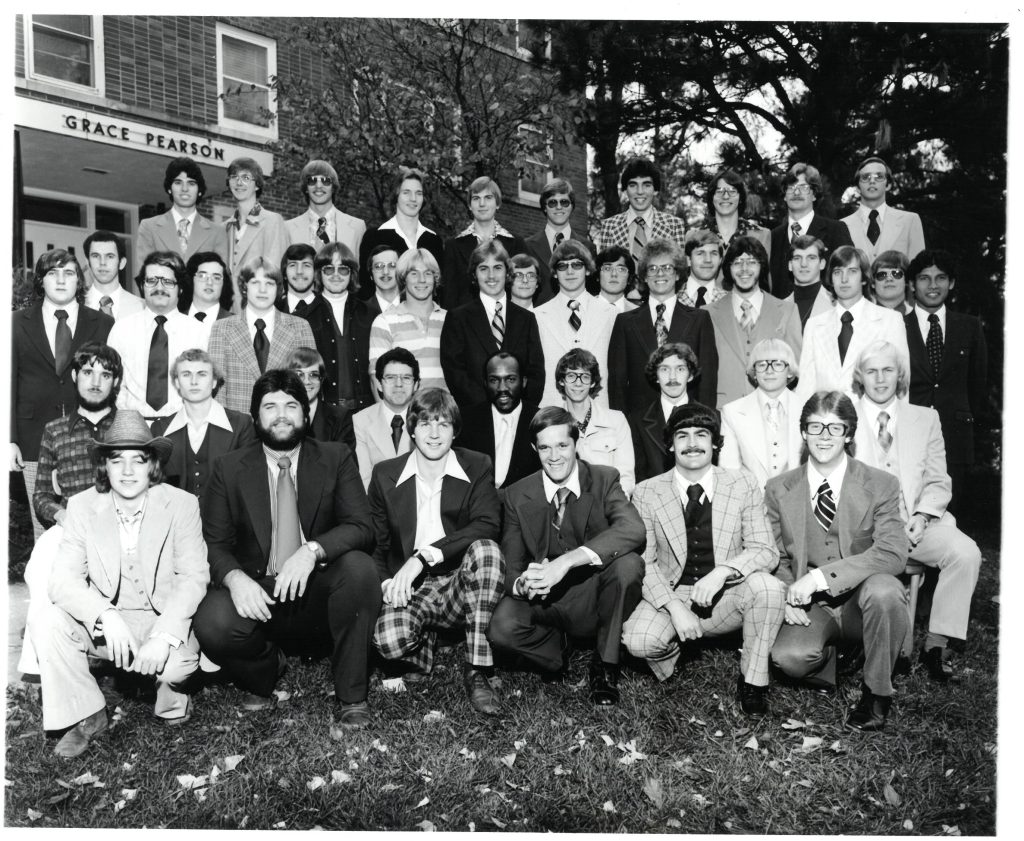“Snap Shots of My University Life”: The Student Scrapbook of Nola Ayers
March 7th, 2025
Nola Mary Ayers was born in Horton, Kansas, in 1886. She arrived in Lawrence in the fall of 1905 to enter the University of Kansas and graduated from KU with a bachelor’s degree in 1909. Nola documented her college years by creating a scrapbook, as did many other university students at the time.
Typically, students purchased a large scrapbook from one of the bookstores near the university. Nola broke with tradition by using a blank “Specimens” science notebook to paste in mementos of her life at KU.

Nola’s scrapbook was also unique because she was an artist and decorated her album with original pen and ink drawings. One of the first drawings in the scrapbook is a self-portrait where she describes herself as a “poor home sick freshman” whose “college home for the year 1905-06 was 1305 Vermont St. Lawrence, Kansas with Mother Dow to call us eight girls down.” This house on Vermont is still standing in the Oread neighborhood. In the years before dormitories, many students lived in boarding houses near campus; many of these large multi-story houses still exist.

Nola documented her studies in her scrapbook. As seen in the image below, she took “Hygiene” and “Gymnasium” during her freshman year – courses that all KU students in the early twentieth century were required to enroll in. Nola also studied rhetoric, German, geology, solid geometry, and botany. Her scrapbook reflects her love of drawing, and her coursework included drawing, ornament design, and Greek art.

Besides coursework, friendships with other students are well represented in the pages of Nola’s scrapbook. She documented slumber parties with other girls, popcorn making, a Halloween party where she dressed as the “Western Girl,” and events at her sorority, Kappa Kappa Gamma. Nola celebrated Valentine’s Day with a party and red hearts pasted into her scrapbook.

As evidenced by her scrapbook, Nola partook many of the outdoor activities KU students enjoyed in the early twentieth century: walking, boating on the Kaw River, picnicking in the countryside, and attending sporting events. According to the 1908 Jayhawker yearbook, Nola was an “authority on baseball” and an “enthusiastic fan.” Indeed, she pasted photos of the KU baseball team into her scrapbook. Nola also included items related to the KU debate team. Debate was almost as popular as athletic sports during the early twentieth century, and students would travel to other cities like Topeka to support the KU team.

According to a newspaper article, Nola was crowned Queen of the May at the second annual May Fete in 1909. She was a member of Allemania (German Club) and attended their events. She appeared to have attended many dances, plays, and concerts while a student, as documented by the many programs decorating her scrapbook. Plays and concerts were held on campus and in downtown Lawrence at the Bowersock Opera House.


Nola Ayers married KU alumus Benjamin P. Young in 1910. According to a newspaper article announcing their wedding, the couple settled in Halstead, Kansas, where Ben was a high school principal. Ben and Nola relocated to Ithaca, New York, by 1923 and appear to have lived there for the rest of their lives. They had two children. Ben died in 1958; Nola passed away in 1973 at age 86.
Becky Schulte
Retired University Archivist and Curator of the Wilcox Collection

















